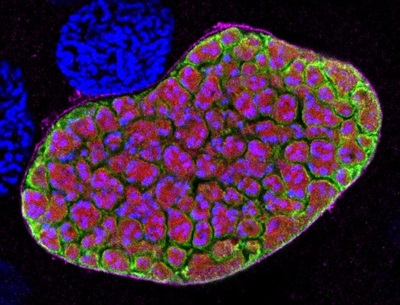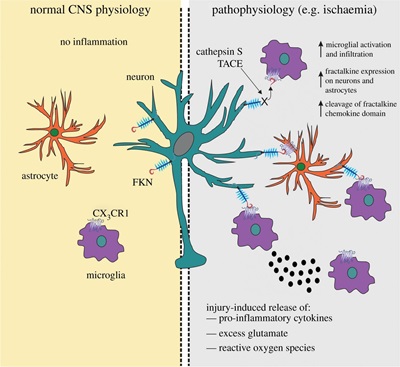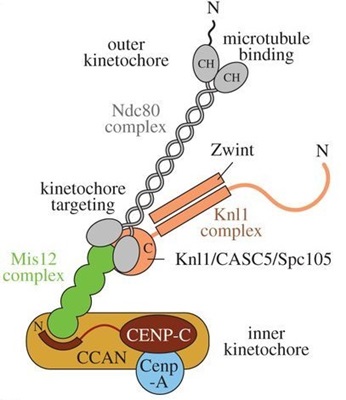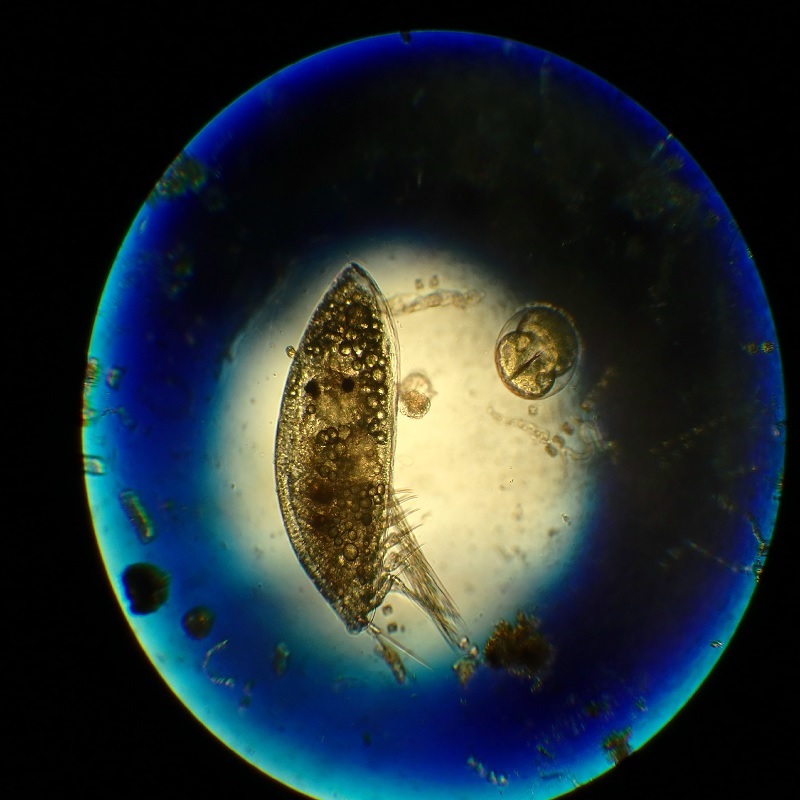Discover some of the journal’s most interesting articles since launching in 2011, from molecular parasitology to neuroscience.

The end of 2021 marks the 10th anniversary of Open Biology as the Royal Society’s first open access title. Over the next year, we will be celebrating the journal’s first ten years and updating you on some of our plans for the next few years and beyond. To kick off celebrations, Open Biology’s Subject Editors highlighted some of their favourite articles from the past decade. Special thanks to our Editors David Glover, Michael Ginger, Anne Bertolotti, Iain Hagan, Natalie Strynadka, Marek Mlodzik and Faith Osier for their contributions.
Molecular Parasitology and Infection Biology
A small mitochondrial protein present in myzozoans is essential for malaria transmission - Dennis Klug, Gunnar Mair, Friedrich Frischknecht and Ross Douglas
This paper describes the serendipitous discovery of a small mitochondrial protein essential for life cycle completion in the mosquito vector of rodent malaria Plasmodium berghei. It’s a niche piece of work, not (as yet) hugely cited but it caught my eye on publication as a very thorough study and self-contained story – the molecular, cell biology and life cycle characterisation of the protein encoded by PBANKA_1222200 is accompanied by a bioinformatics analysis showing gene conservation across the large protist group Myzozoa (including dinoflagellates, apicomplexans (which include malarial parasites, the opportunist Toxoplasma gondii, and several important animal pathogens), and everything in between) and providing an easily missed reminder of the importance of the small proteome (peptides less than 100 aa long) in eukaryotic biology.
A toolkit enabling efficient, scalable and reproducible gene tagging in trypanosomatids - Samuel Dean, Jack Sunter, Richard Wheeler, Ian Hodkinson, Eva Gluenz and Keith Gull
This methods paper is authored by Samuel Dean and colleagues at the time when Samuel was a Sir Henry Wellcome Fellow under the mentorship of Keith Gull (Sir William Dunn School of Pathology, Oxford). Keith is an author of several publications in Open Biology but I’ve picked this paper as a highlight: it describes the development of strategies and tools to tag protein-coding genes with fluorescent proteins or other tags at endogenous gene loci – something that is necessary in the reverse genetic manipulation of trypanosome gene expression since with rare exception protein coding genes are uniquely expressed without regulation at the level of transcript initiation (see ‘Regulation of gene expression in trypanosomatids: living with polycistronic transcription’ by Christine Clayton for further explanation.) This work not only paved the way for a genome-wide study by the same team to tag all protein-coding genes in Trypanosoma brucei at their N- and C-terminii with mNeonGreen, but typical of Keith’s generous nature, the work published provided a host of plasmids and PCR-templates for quick, efficient gene manipulation that have been provided readily to many in the trypanosomatid community in the UK and other countries.
Liver cell with P. berghei (Wikicommons CC BY-SA 3.0).
Neuroscience
Neuron–glia crosstalk in health and disease: fractalkine and CX3CR1 take centre stage - Graham K. Sheridan and Keith J. Murphy
This ambitious review describing the relationship between neurons and glial cells is of interest to many neurobiologists working in research areas from learning, memory and synaptic plasticity to neurodegenerative conditions such as multiple sclerosis and Alzheimer’s disease. The fractalkine/CX3CR1 partnership represents a novel therapeutic target for many disorders of the central nervous system and the current literature is fast expanding. This article comprehensively reviews our current body of knowledge and suggests future directions of research into this unique chemokine.
Phosphorylation of Parkin at serine 65 is essential for its activation in vivo - Thomas McWilliams and co-authors
In this paper an international team of scientists led by the University of Dundee verified that a molecular pathway that has been studied for years under laboratory conditions, is also disrupted in Parkinson's disease patients. The discovery succeeds the exciting journey of work published by the group and for me this is a standout paper. Miratul Muqit and colleagues developed a genetically engineered mouse to study the Parkin switch in tissues and researchers were unaware of its significance in humans. The ambitious project was headed by Tom McWilliams and through a collaboration involving Anu Suomalainen-Wartiovaara, Pentti Tienari and Risto Pohjolan-Pirhonen, the team also identified a patient to have a mutation in the same Serine 65 switch. The study remains one of the most cited study in Open Biology, highlighting the importance of this "molecular switch" in Parkinson's patients.
Fractalkine and CX3CR1 in neuroinflammatory conditions (https://doi.org/10.1098/rsob.130181).
Cell and molecular biology
The role of DDK and Treslin–MTBP in coordinating replication licensing and pre-initiation complex formation - Ilaria Volpi, Peter Gillespie, Gaganmeet Singh Chadha and Julian Blow
This manuscript is a particularly comprehensive and insightful study. The generation and characterisation of a suite of antibodies at the outset shows just how important it is to have good quality reagents to get compelling answers to penetrating questions of complex systems. This attention to detail is sustained through elegant fractionation and reconstitution studies in which particular attention is paid to quantitation of replication factor components, in order to determine how rate limiting the different components will be and so how these in vitro studies can be interpreted in terms of the well characterised rates of replication in vivo. The depth to which a spectrum of pharmacological agents are applied to interrogate complex regulatory relationships between the kinases and protein phosphatase 1 in orchestrating the initiation of DNA replication is the icing on a very rich cake. This is a beautiful study that typifies the quality and depth that we welcome in Open Biology.
Developmental Biology
These are two of the first three papers that I handled as an Editor, and I really liked them as they are approachable for a developmental biologist/cell biologist although they deal primarily with structural biology. Also, the senior author on the first (Andrea Musacchio) is somebody I knew as a trainee when I was at the EMBL, and so it was nice to see that he succeeded well as a PI and his research was thriving.
Insights from the reconstitution of the divergent outer kinetochore of Drosophila melanogaster - Yahui Liu, Arsen Petrovic, Pascaline Rombaut, Shyamal Mosalaganti, Jenny Keller, Stefan Raunser, Franz Herzog and Andrea Musacchio
Network of protein interactions within the Drosophila inner kinetochore - Magdalena M. Richter, Jaroslaw Poznanski, Anna Zdziarska, Mariusz Czarnocki-Cieciura, Zoltan Lipinszki, Michal Dadlez, David Glover and Marcin Przewloka
Schematic of the human kinetochore (https://doi.org/10.1098/rsob.150236).
Immunology and Genetics
Neutrophil heterogeneity in health and disease: a revitalized avenue in inflammation and immunity - Martina Beyrau, Jennifer Victoria Bodkin and Sussan Nourshargh
This is an important contribution to the field of neutrophil biology. Although neutrophils have traditionally been considered to exist as relatively uniform population of cells, there is now a growing body of evidence for the existence of different subtypes of neutrophils under both physiological and pathological conditions. The review best summarised findings at the time to highlight the occurrence and significance of neutrophil subsets. A better understanding of this developing field could promote work towards targeting pathogenic neutrophil subsets as a novel therapeutic strategy for treatment of inflammatory conditions.
Statistical methods to detect pleiotropy in human complex traits - Sophie Hackinger and Eleftheria Zeggini
A very thorough and scholarly review of the large and growing literature on statistical approaches to detecting pleiotropy. Pleiotropy is the phenomenon in genetics whereby a DNA variant influences multiple traits. There is very clear and useful categorisation of the problems (eg. study design considerations) and types of analyses (genome-wide, regional or single variant), which makes the paper easy to follow. The clear writing and structure of the review, combined with the comprehensive references, provides a very useful resource for statistical researchers and students in this area.
Open Biology celebrates ten years as the Royal Society’s open access journal for cellular and molecular biology. Find out more about becoming an author and how to submit.
Image Credits
1.) Photo by National Cancer Institute on Unsplash. Kras-Driven Lung Cancer. Created by Eric Snyder, 2015.
2.) A liver stage of the rodent malaria parasite Plasmodium berghei. This picture is taken by Paul Christian Burda. Wikicommons CC BY-SA 3.0.
3.) Fractalkine and CX3CR1 in neuroinflammatory conditions. Figure 3. from Neuron–glia crosstalk in health and disease: fractalkine and CX3CR1 take centre stage https://doi.org/10.1098/rsob.130181
4.) Schematic of the human kinetochore. Figure 4(a). from Insights from the reconstitution of the divergent outer kinetochore of Drosophila melanogaster https://doi.org/10.1098/rsob.150236






